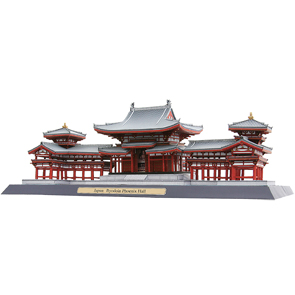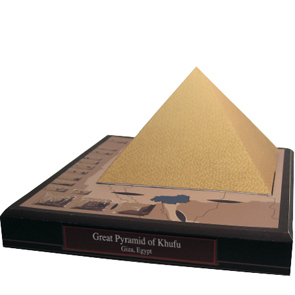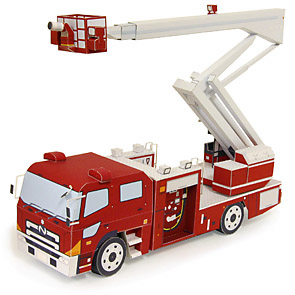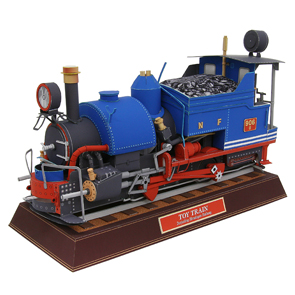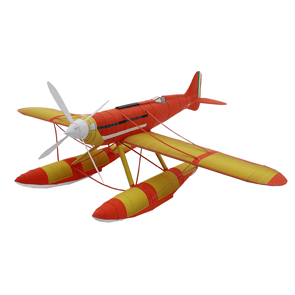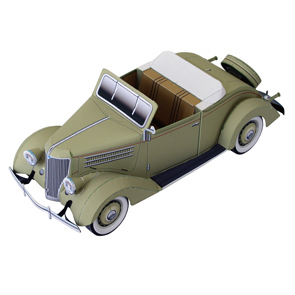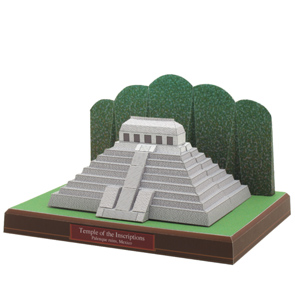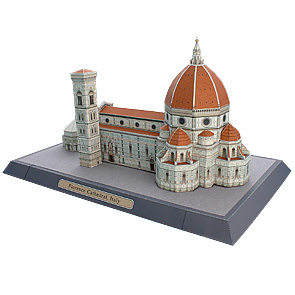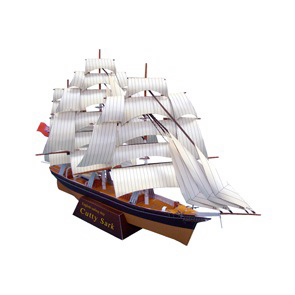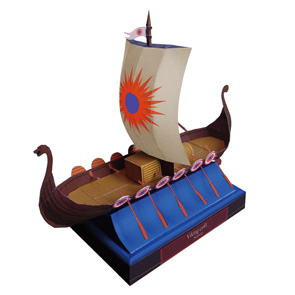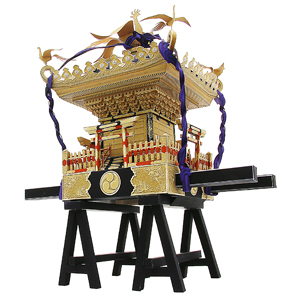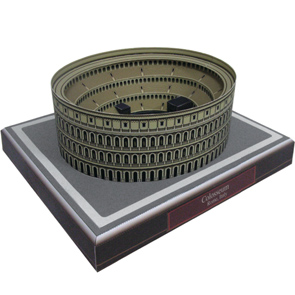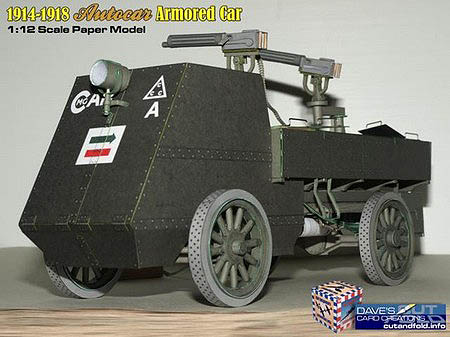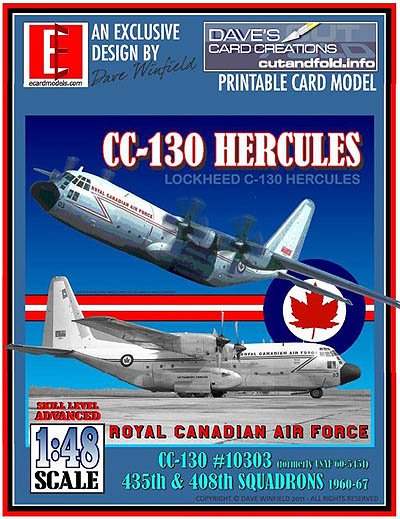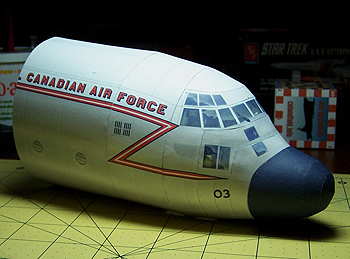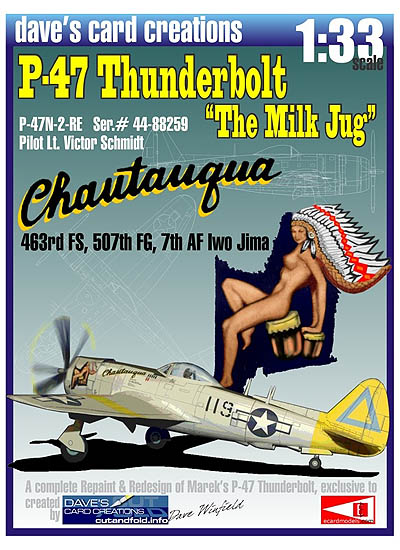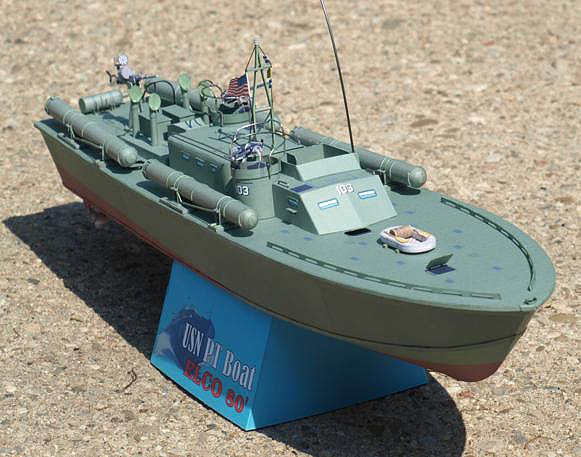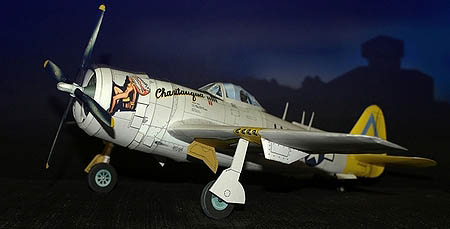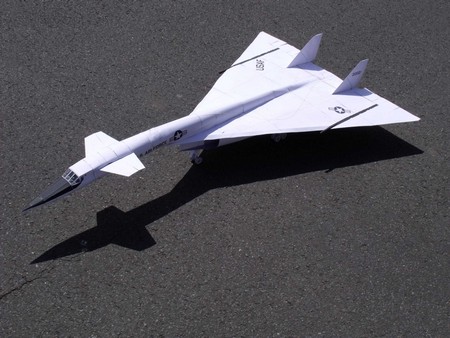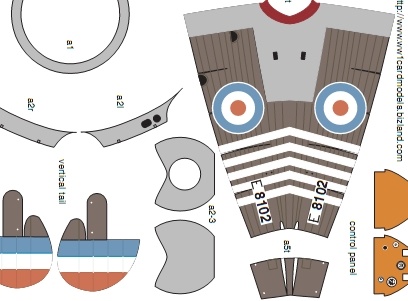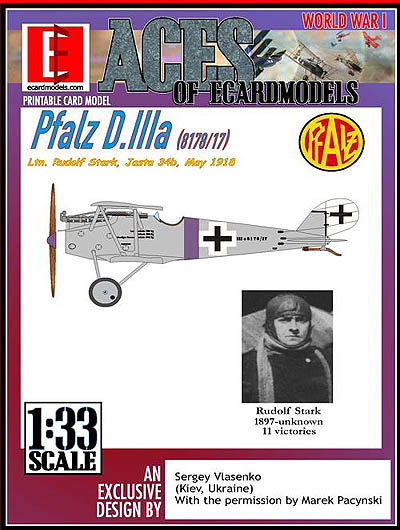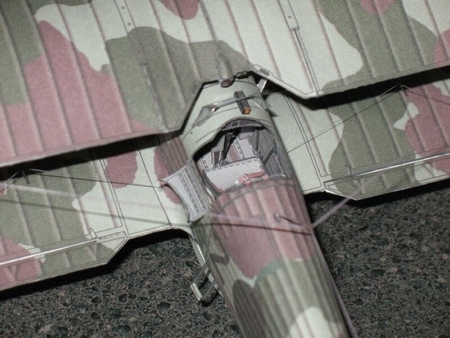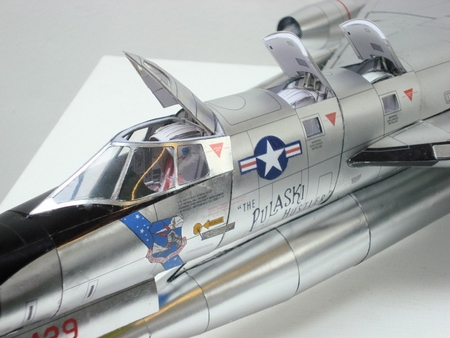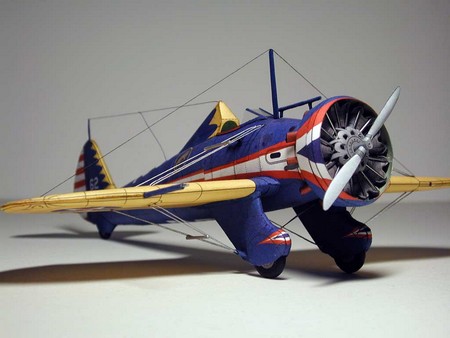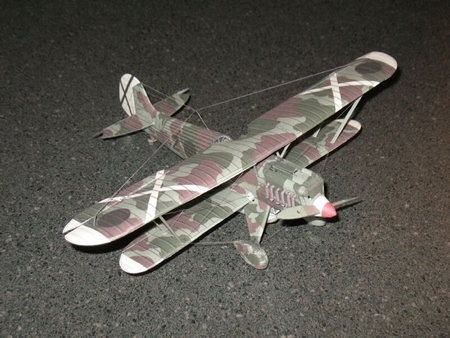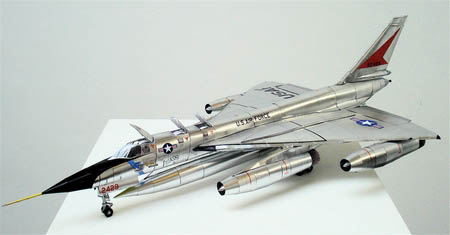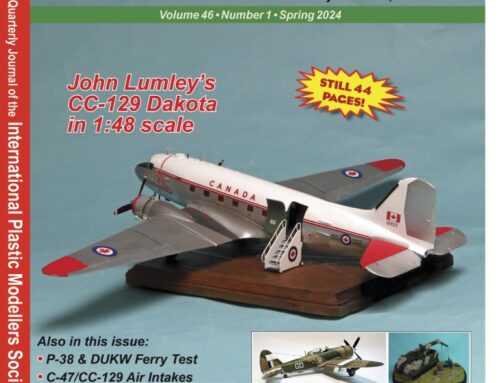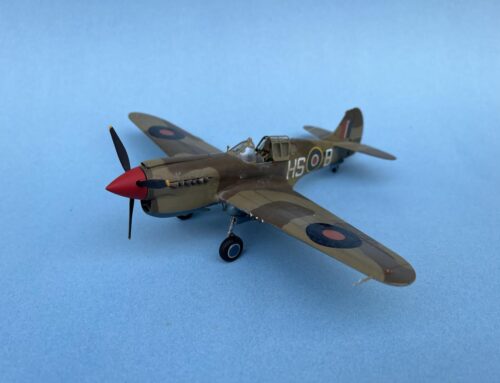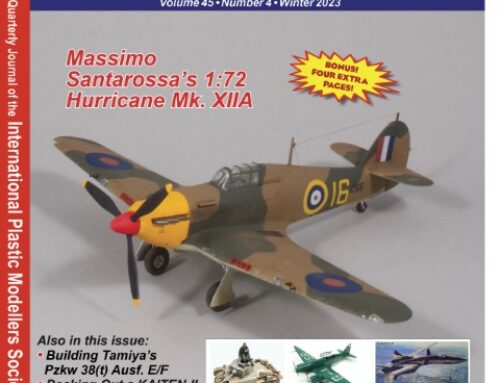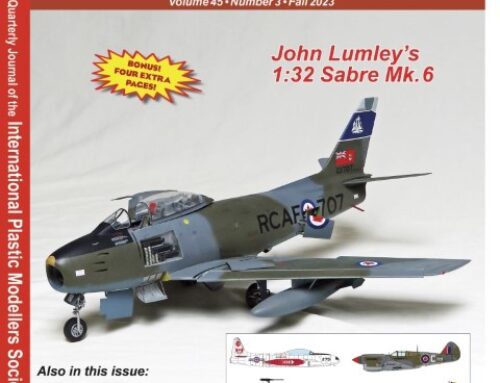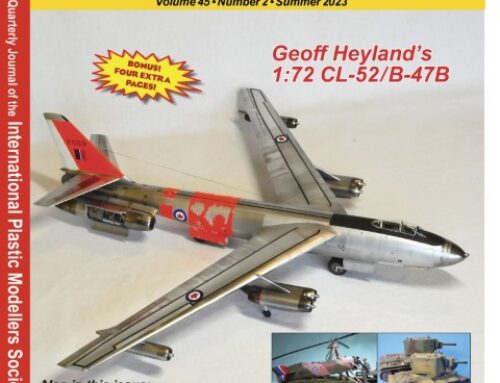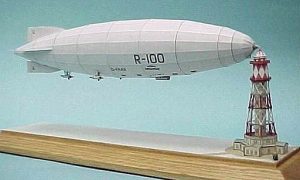 by Kim Elliott, IPMS Canada
by Kim Elliott, IPMS Canada
The use of paper or card stock to make models is hundreds of years old, and is enjoyed by people around the world. Subjects for card models are as diverse as aircraft, buildings, trains, vehicles and even animals. From simple kits output on a home printer and built in an evening, to commercially printed models containing thousands of parts and constructed over many months, you may find many that will suit your abilities and budget. The tools can be as simple as a hobby knife, a cutting surface, and some white glue.
The oldest paper models are saved in museums from the 18th century. Soon after the Revolutions of the 18th century (French, Industrial, American) there were attempts to use paper for industrialized production of toys and models. Similar to tin toys, paper toys took a big step forward when the production was combined with new printing methods. Printed paper sheets could be sold to children and their parents, to assemble the models themselves.
During the 19th century, several printing companies developed coloured and printed paper model kits aimed at children. In the late 19th century, paper modelling became a very sophisticated hobby for people with the highest demands of beauty and accuracy. Modern glues, printing and paper qualities allowed this development. After the First World War, interest grew to cater to scale models for boys interested in military technology: tanks, ships and airplanes. By this time, a variety of subjects and genres had appeared: architectural, maritime, industrial, vehicle, aviation, etc.. As the 20th Century progressed, subject matter became universal. Of note, however, was the use of card models in the popular scales used for model railroading and car modelling. These models were frequently of buildings and structures associated with train layouts, or in dioramas with other wheeled vehicles. Paper modelling became particularly popular in Eastern Europe after WWII. Trade limitations meant that Western goods, including plastic models, were either unobtainable or extremely expensive, so producers used the most common media available – paper. Around the end of the 20th century some companies in Poland and the Ukraine started publishing very high quality models. (see list below). Although not yet as popular in North America as in Europe, model shows and competitions have started to see an increase in this activity.
Recently interest in card models has increased worldwide due to the advent of the home computer and the internet. In many cases the models themselves can be obtained in the form of a computer file, and be printed at home on a low-cost printer. Many companies and individuals are offering kits in digital form, and a new generation of designers is creating models using computer aided design programs. Besides a growing number of commercial distributors of paper models there are many companies and private people offering free paper models from their sites. Recent advanced paper models are designed using 3D software, and accurate reference material. Complexity can range from the very simple, to highly complex, with kits having thousands of parts.
How does a paper kit differ from a plastic one? In skilled hands, the end result may be indistinguishable. Unless the kit is pre-cut, there is the need to cut the part from the printed sheet. Folding of the part to achieve three dimensionality, and folding of glue tabs is next. Fitting the parts together follows. Some patience waiting for the glue to dry is to be expected. To this writer, not having to paint the model is very attractive. The range of printed finishes that are possible is limited only by the designer, and not the skill of the modeller. Of course, the kit can be painted after assembly, if the modeller wishes to do so.
If your child is old enough to safely use a hobby knife he or she might get a kick out of card modelling. For school projects or just plain fun, there are a great variety of kits that will appeal to kids of all ages. Because of the use of sharp cutting tools, and the challenge of folding, positioning and gluing parts correctly, parents may wish to assist the child in their first few kits (although many children’s models are simple enough to require only scissors). It’s a great opportunity to enjoy some time together away from the television and computer. The kits can be purchased at hobby retailers, or obtained from on-line sources. Many offer free downloads, or request a voluntary donation. Some recommended on-line links and sources may be found below.
I would like to thank Rafal Trzop of Ottawa, Dave Winfield (Dave’s Card Creations, Cambridge, Ontario), and Chris Gutzmer (USA) of ecardmodels.com for providing photos, links and suggestions for this article.
Further Reading and Resources
http://www.airship-model.com/
http://www.bildrum.se/paperorplastic.htm
http://www.creativecloseup.com/100-exceptional-free-paper-models-and-toys
http://www.currell.net/models/index.htm
http://www.fiddlersgreen.net/
http://www.lowtechmagazine.com/2008/02/download-print.html
http://www.papermodelers.com/


